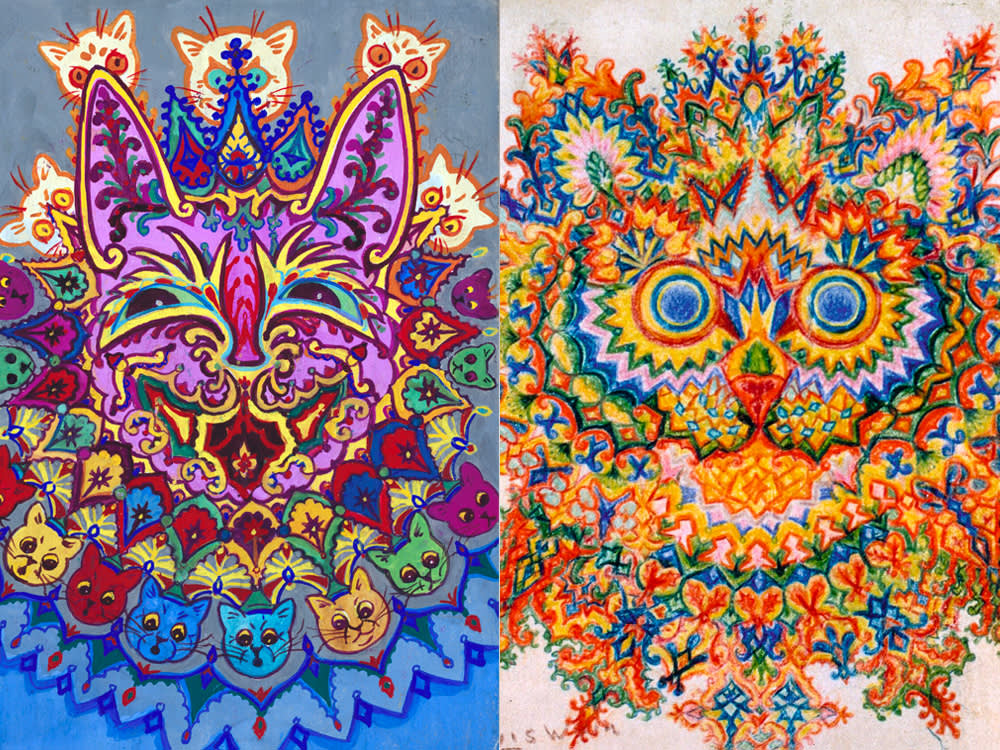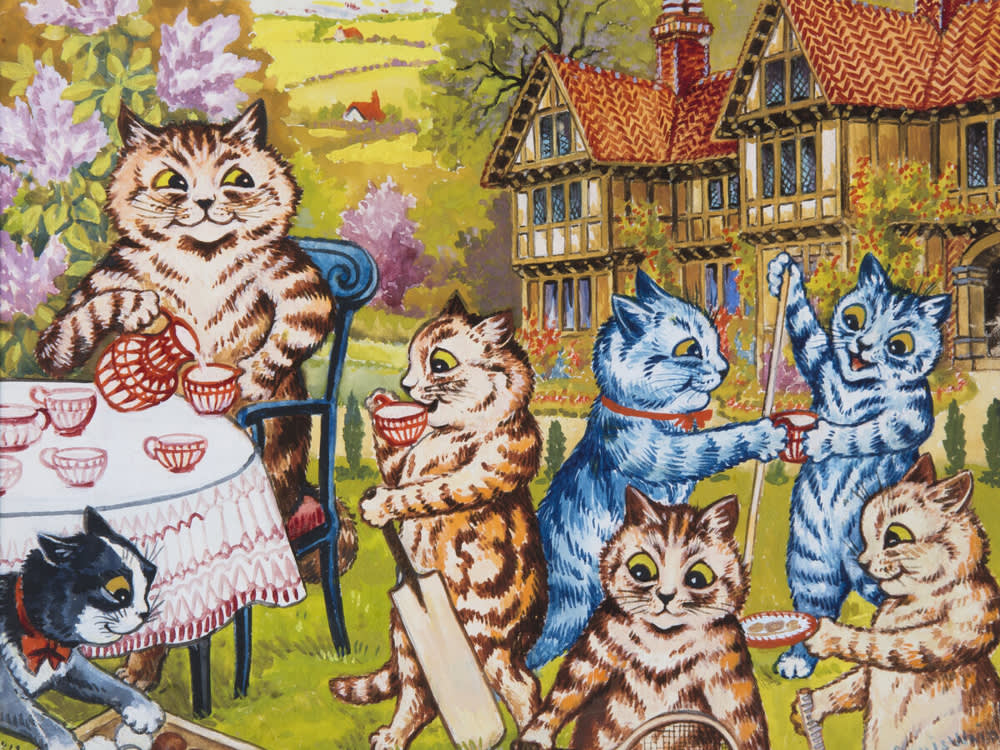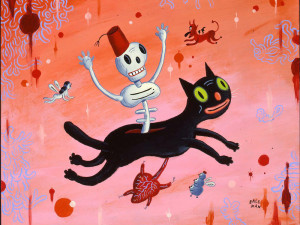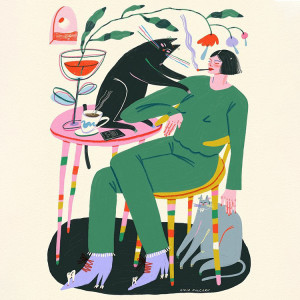Cats Are the Real Stars of the Electrical Life of Louis Wain
Benedict Cumberbatch plays the quirky artist famous for his fanciful illustrations of cats.

share article
For a film based on the life story of someone famous for painting cats, The Electrical Life of Louis Wain sadly doesn’t pack in quite as many animals as one would hope, though when they do show up they’re plenty cute.
The Electrical Life of Louis Wain stars Benedict Cumberbatch in the titular role of the long-forgotten, recently re-embraced Victorian artist who specialized in extremely popular illustrations of cats. Cumberbatch, who co-produced the film, plays Wain through more than 50 years of the man’s life, chronicling the scandal of his love, and then loss, of wife Emily Richardson (Claire Foy), his rise to fame as an illustrator of cats, and the ongoing mental health and financial issues that see him reduced to a pauper near the end of his life — before being rescued by a public charity drive to live out the rest of his days in luxury. I’m not sure if that’s too much of a spoiler, but it’s a biopic — can you spoil those?
The modern interest in Wain, a man who might otherwise have been forgotten amidst a sea of other Victorian illustrators, is a series of paintings of cats he did which become increasingly abstract and geometrical. This progression, first published in the book Psychotic Art in 1960opens in a new tab, was claimed to show his descent into schizophrenia as his art gets further and further removed from realism.
The problem with that story is there’s not much evidence to back it up. Wain didn’t date his illustrations, and it’s not clear if it was a linear progression, or if he just dabbled in the style, and in fact did continue to paint more realistic images later in life. But this concept of a mind slowly stepping away from reality continues to dog (er...cat?) his legacy, and this myth persistsopens in a new tab — but it’s not even clear if Wain suffered from schizophrenia at all. To the film’s credit, it doesn’t lean too hard into this traditional interpretation, and while it does place the abstracted drawings later in his life, the movie never attempts to connect them specifically to his diagnosis.
I don’t know if it’s the difficulty of working with cats in film, but the movie treats the actual animals as garnishes rather than a core ingredient. The story is bookended by the critters, and there are some nice scenes in the middle of the film when Wain finally gets the cat that starts him on the road to stardom, but as I marked in my notes at one point: “30 minutes, almost no cats.” Later on they’re present in the background or in passing, but rarely receiving much screen time individually.
But even without the creatures themselves, the second half of the film is suffused in cats as a concept (and in electricity, another driving obsession of Wain’s, which is referenced in the title). Wain’s cat-themed art becomes central to the story, and the artist finds himself a key member of a burgeoning “cat society” (the concept of animals as pets, rather than working animals, in partly due to the popularity of his work).
Wain’s fascination with, and anthropomorphisation of, cats intersects with how the film deals with his mental health, taking a sinister turn later on in the story. The way The Electrical Life of Louis Wain paints mental health is...interesting. For the vast majority of the film, Wain’s struggles are primarily painted as a sort of pleasant quirkiness, but rather than portraying it with any sort of subtlety, it all but instantly goes from cute and quirky to full breakdown, as the movie rapidly descends to its conclusion.
I’m a firm believer that not all films need to be for all people, and this is not a movie for me. But, there is certainly an audience for whom this movie is. It’s family friendly, with just a single obscenity (though that’s uttered very early), and only some small blood in passing, nothing more violent than a punch in the nose. At its heart, it strives to be about love, about finding magic in the mundane, and about celebrating the joy in the world — primarily through the medium of anthropomorphised cats. Still wish there were more cats in it, though.

Tim Barribeau
Tim Barribeau is a freelance writer, editor, cat dad, and “help your boyfriend buy a suit that actually fits for once” consultant. He was previously the Style and Pets editor at Wirecutter, and has bylines at a bunch of publications that don't exist anymore (and a couple that still do).
Related articles
![Painting of skeleton riding cat with heart below]() opens in a new tab
opens in a new tabArtist Gary Baseman on Late Cat Blackie & New Kitten Bosko
“Blackie was a friend and a collaborator. I never saw him as a pet and I don’t see Bosko as one either — they are family members.”
![Illustration of a woman sitting at a table with two cats]() opens in a new tab
opens in a new tabArtist Livia Fălcaru on Felines, Feelings, and Dream Fashion Collabs
“I just simply like the idea of cats and their specific things. Throwing in a cat is something that comes naturally now when I make an illustration.”




